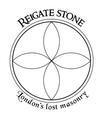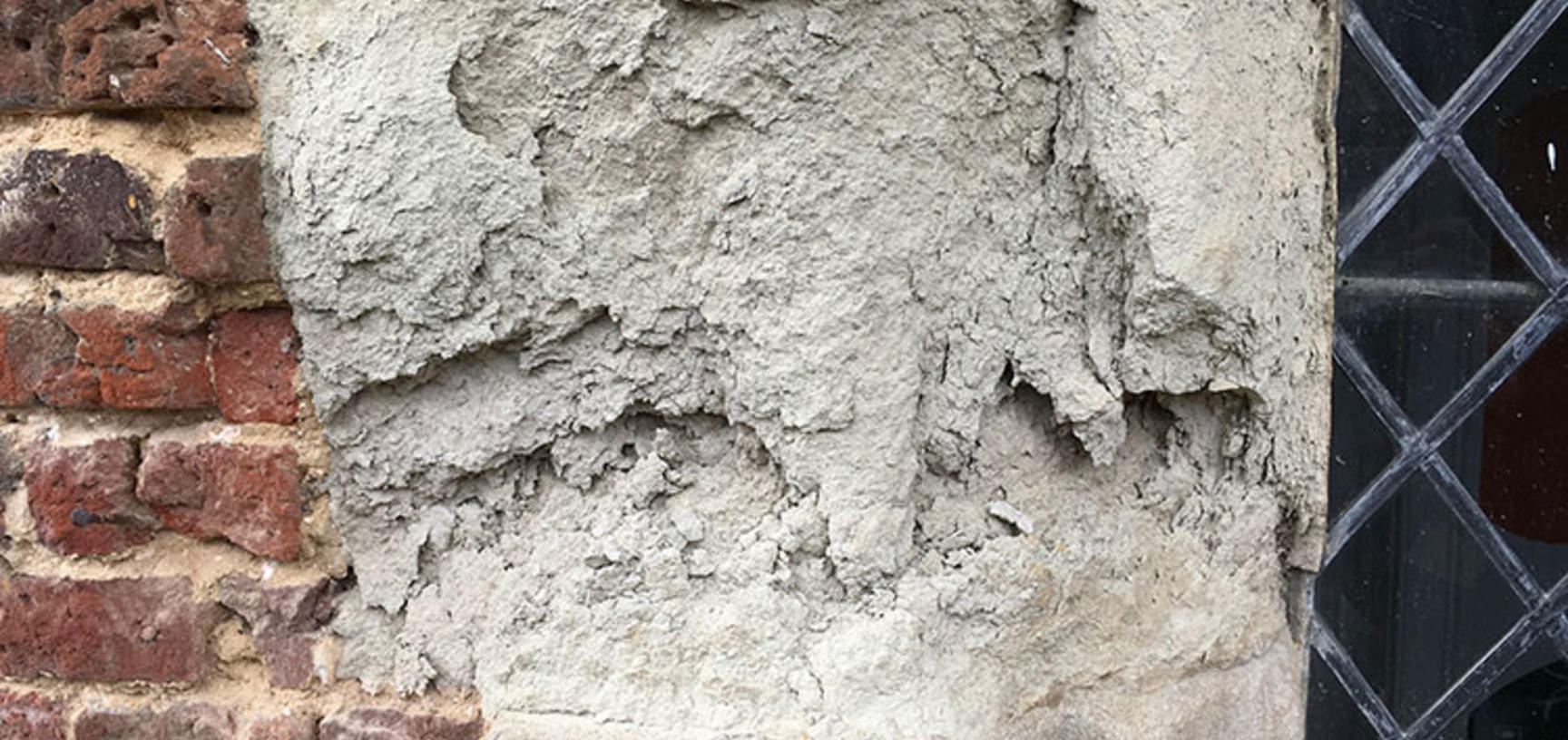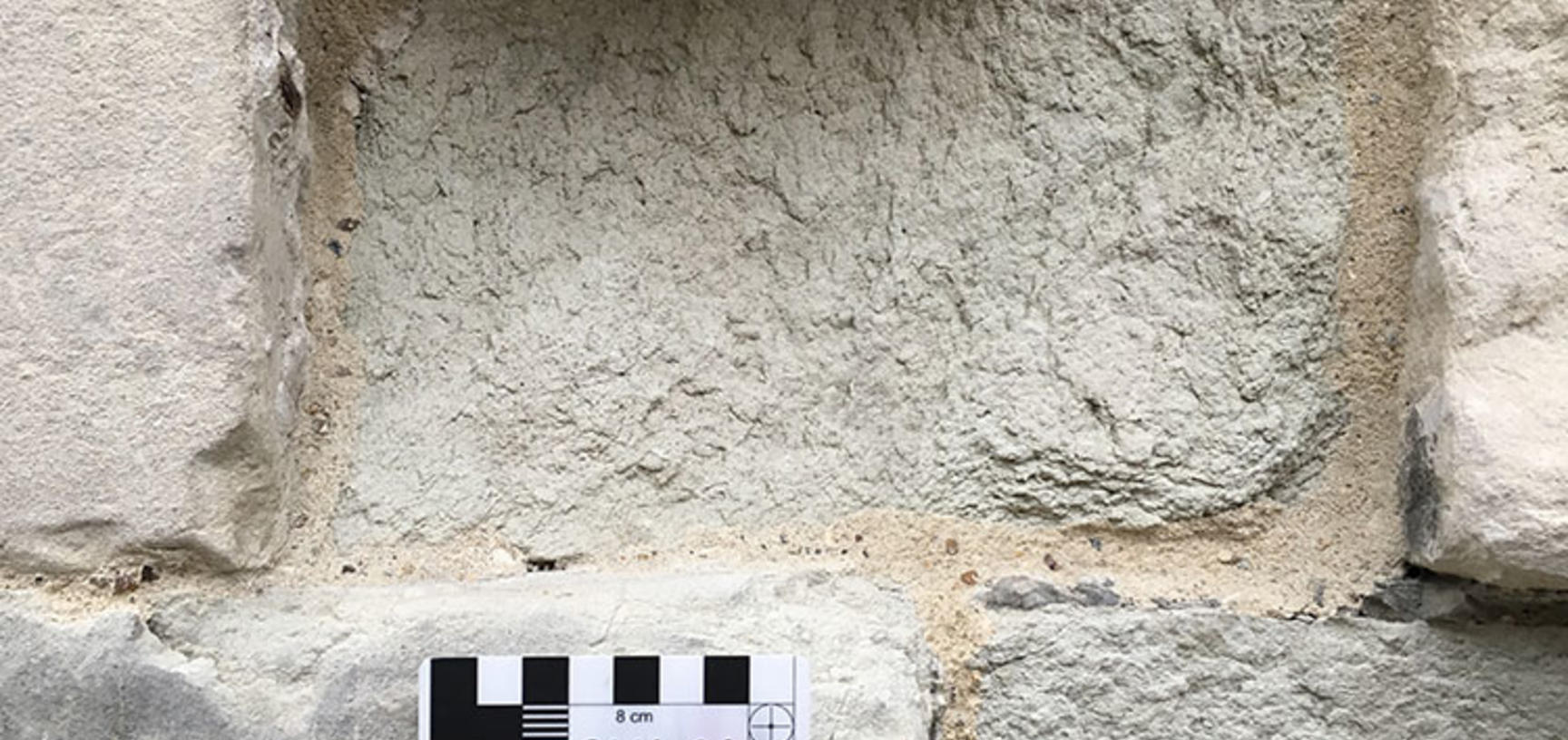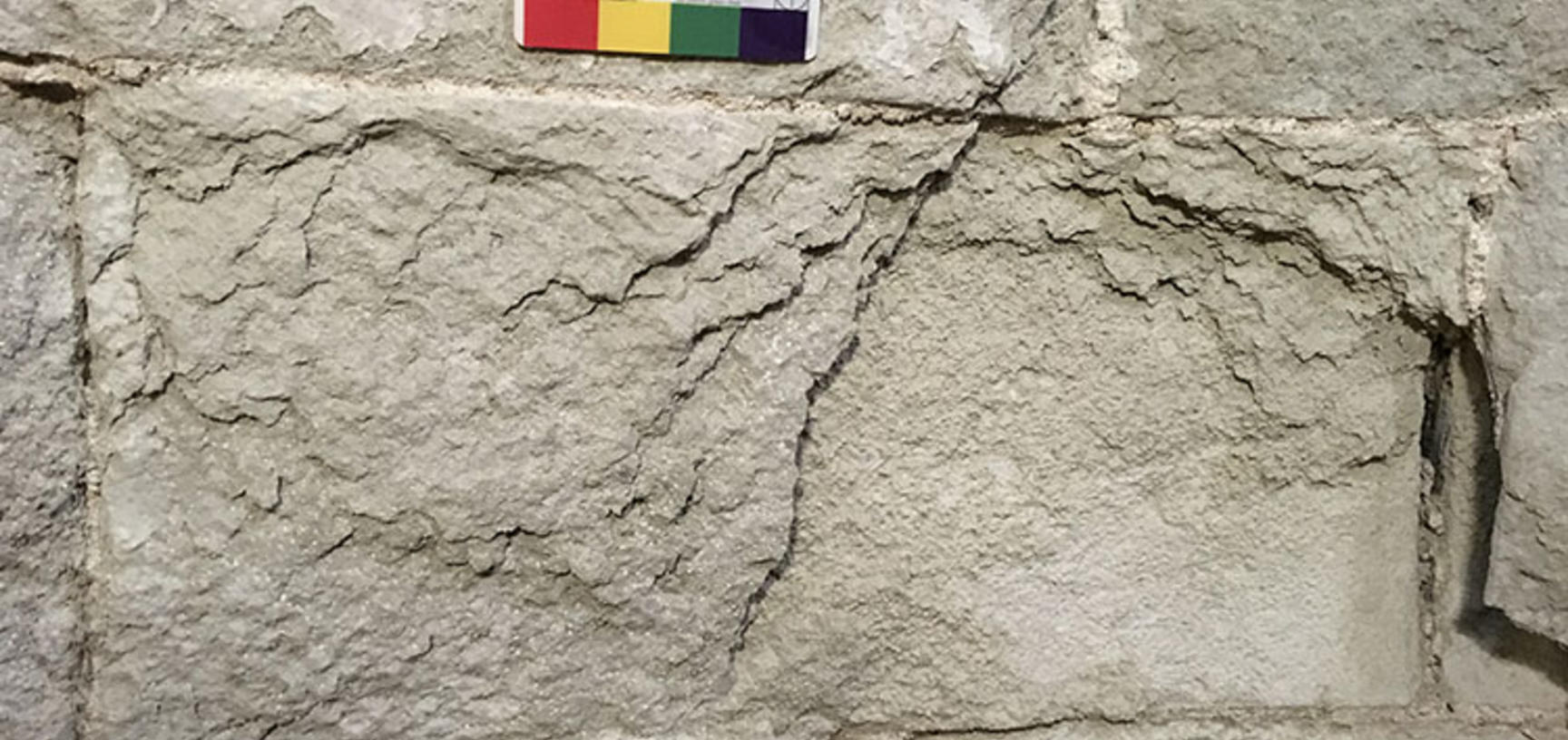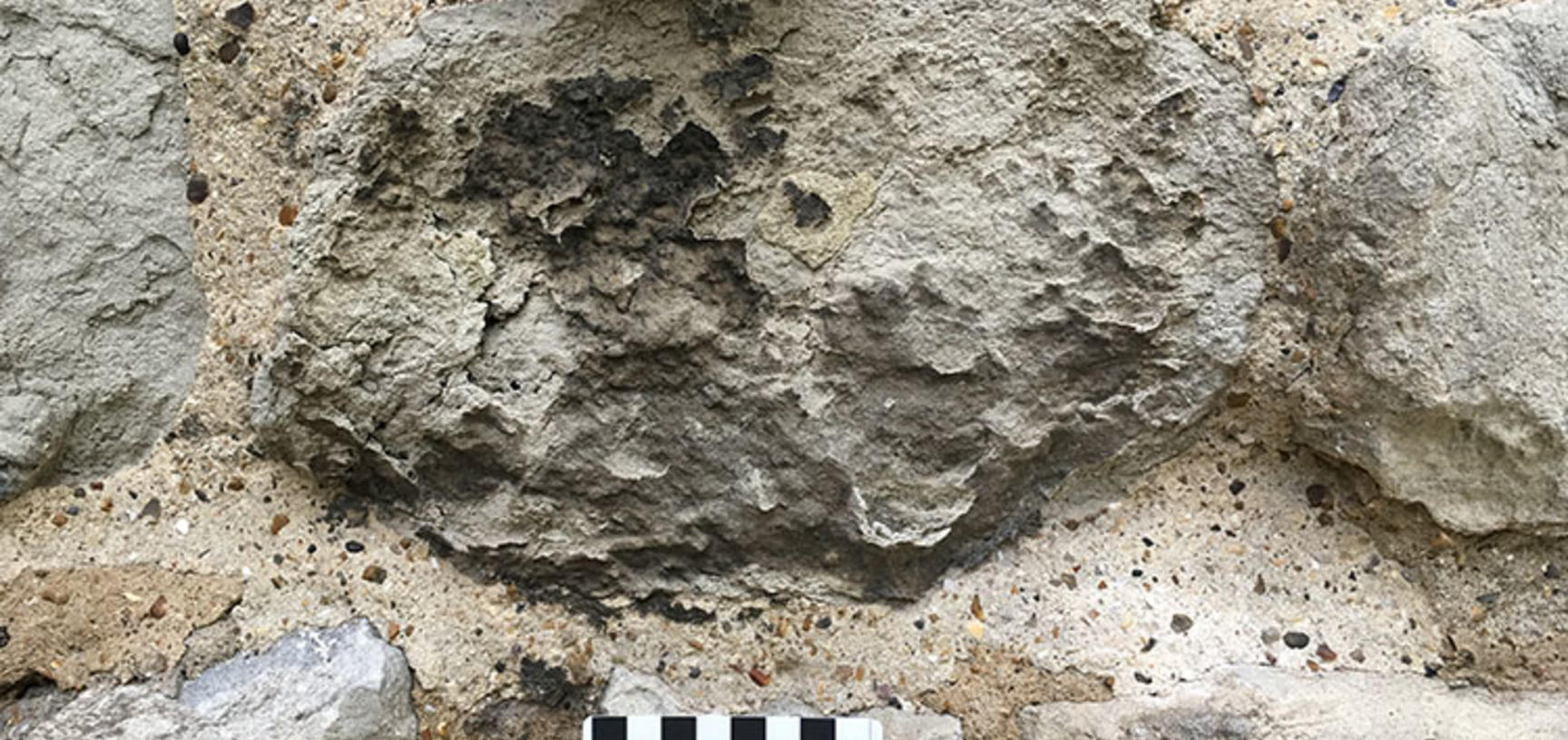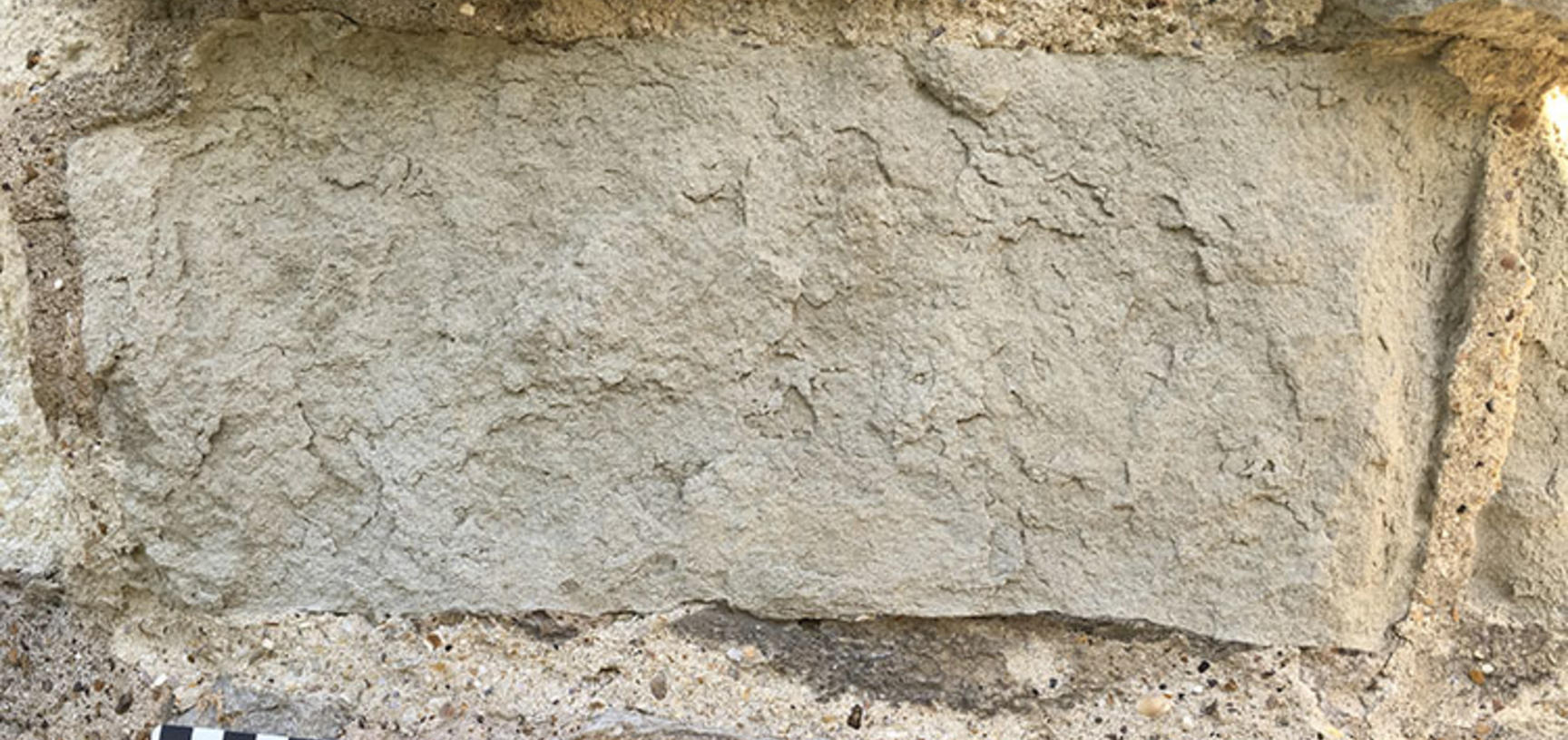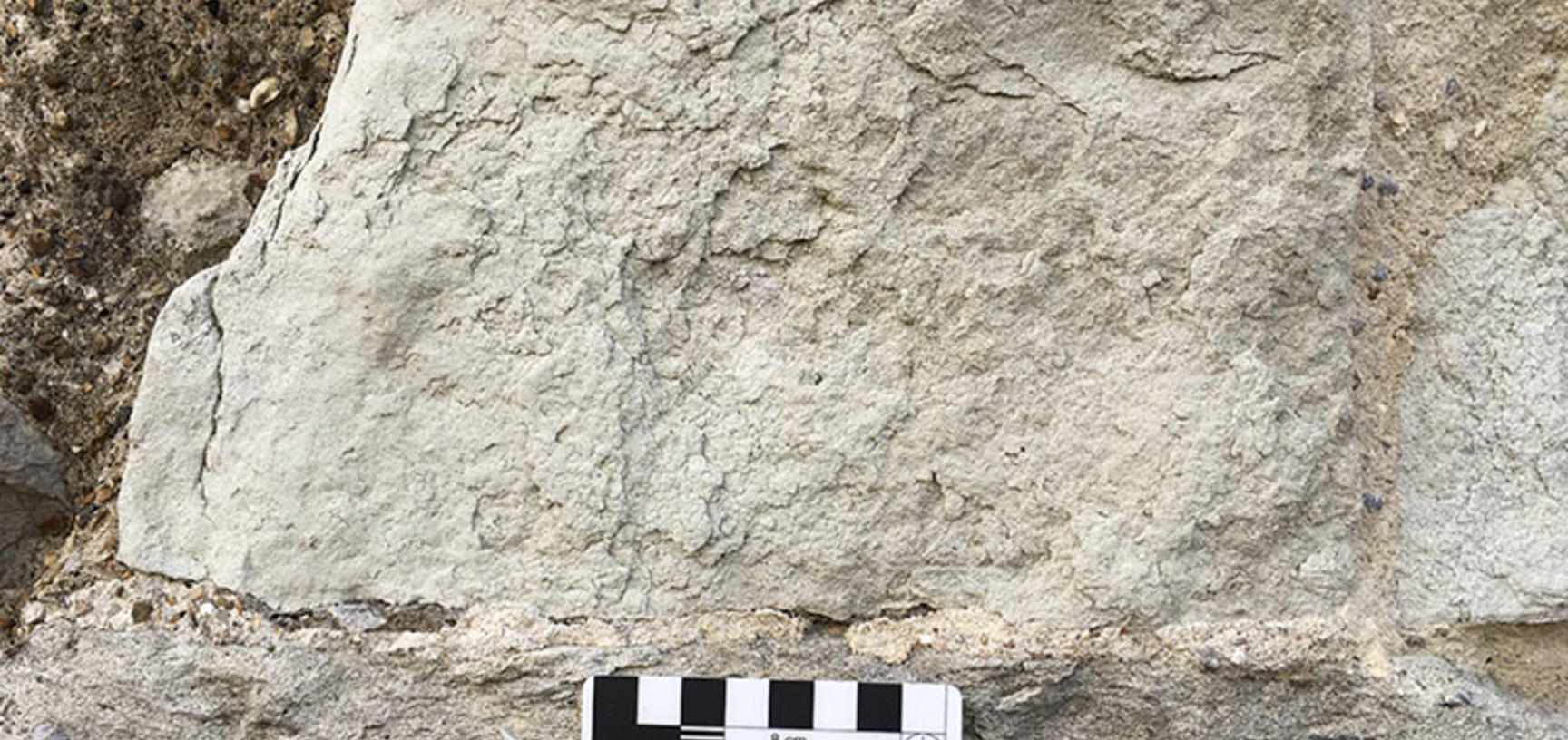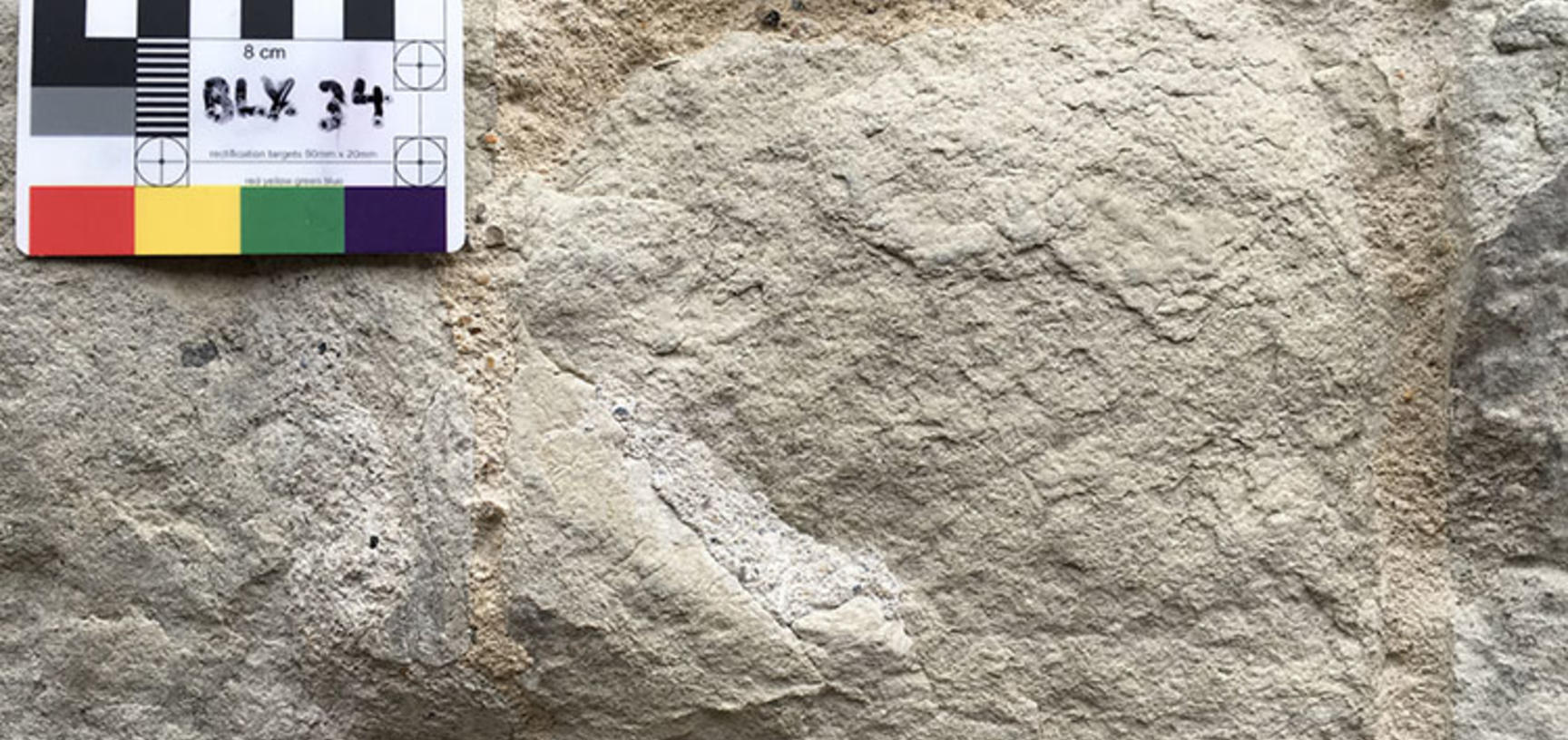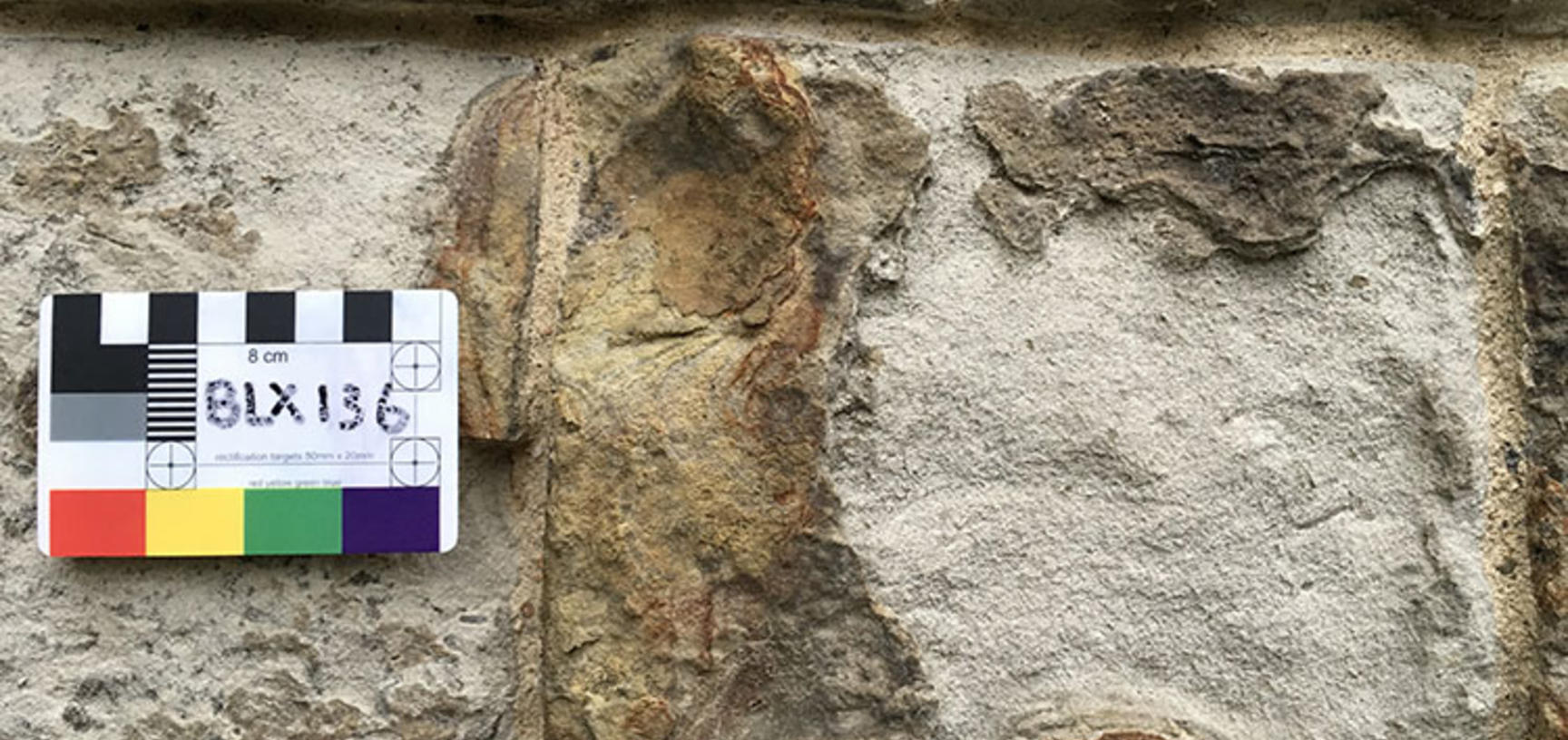Scaling (flaking or spalling)
Occurence and appearance
Detachment of scales is common in Reigate Stone. This can occur in one of two patterns:
- The detachment of millimetric or sub-millimetric (thickness) flakes, sometimes organised as fish scales. Flakes do not follow bedding planes, if such are at all visible in the stone surface, but instead seem to propagate parallel to the surface.
- The spalling of a crust or outer case.
There is some indication that both patterns are more common in calcareous subtypes, but flaking can also be understood as a more aggressive form of detachment affecting exposed masonry, and detachment of scales frequently reveals a powdering substrate with visible salt contamination indicating subflorescence.
Condition Assessment
| Score |
Coverage (affected units in an area) |
Severity (worst affected unit) |
|---|---|---|
| 1 |
There is no scaling in this area of masonry. |
Isolated parts of the stone show signs of scaling, but the shape and volume of the stone is largely intact. The detachment does not appear to be recent, or if it is recent it is insignificant. |
| 2 |
Isolated stones are showing signs of scaling. |
There are signs of scaling across the stone surface, resulting in noticeable erosion, but the surface is sound, and the process does not appear to be aggressively active. |
| 3 |
Up to half of the stones in this area of masonry are showing signs of scaling. |
There are signs of active, aggressive scaling in parts of the stone. The stone surface in these areas lacks cohesion. This process is resulting in active loss of material. |
| 4 |
More than half of the stones in this area of masonry are showing signs of scaling. |
There are signs of active, aggressive scaling across much of the stone surface, which lacks cohesion. There may be additional subsurface powdering or visible salt crystals. This process is resulting in active loss of material. |
Previous page (Disintegration)
Next page (Blistering)

